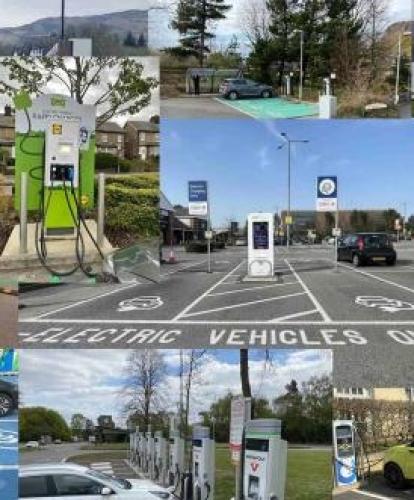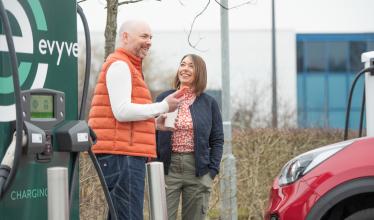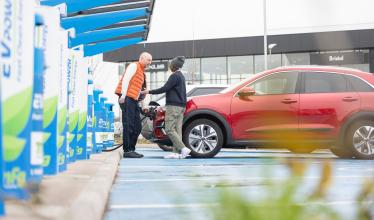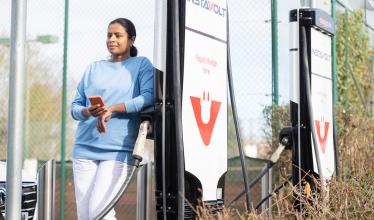It is understatement to say that a lot happened in 2021. More specifically, over the course of the year, a lot of things changed for electric vehicles (EV) and the charging infrastructure that supports them.
Across the UK, vehicles were purchased, announcements were made, milestones were hit, networks changed hands – and charging devices were put into the ground. There was a lot to keep track of in a booming industry. Here we highlight some of the key moments in a year of change. So, what happened to EV charging infrastructure in 2021?
The UK passed a lot of electric milestones
The EV story
First, let’s take a quick look at some of the milestones hit in the UK from sales of new battery-electric (BEV) and plug-in hybrid vehicles (PHEV), known together as plug-in vehicles.
In May, the number of BEVs in the UK officially passed a quarter of a million (260,000). Taking PHEVs into account, this also took the cumulative total of plug-in vehicles on UK roads to over 530,000. The positive trend continued in June, with BEVs topping 10% market share for the first time in 2021.
August was another good month for plug-in vehicles, when plug-in vehicles reached 15% market share in 2021 year-to-date. However, the crucial month was September, which saw the highest ever sales of plug-in vehicles in a given month. 46,600+ new plug-in registrations that month meant that the number of plug-ins on UK roads had increased by 75% since September 2020.
As things stand, with almost 30% of new vehicles sold in November having a plug, the prospect is encouraging for BEVs in particular as we enter the New Year.
The charging story
With all these new vehicles looking for somewhere to charge, the UK’s charging infrastructure also passed some significant milestones in 2021.
To start off the year, Lidl and Pod Point celebrated passing their 100th charger milestone, with a ‘destination’ charger installed at Lidl’s store in Hillingdon, West London. The supermarket trend was one that would continue throughout 2021, with the RAC and Zapmap finding in September that nearly 1,000 new EV chargers had been installed at supermarkets over the preceding 21 months.
Bigger and broader milestones were also hit. At the end of April, the UK surpassed 15,000 charging locations on the Zapmap database. In August, we reached 25,000 EV charging devices, and Zapmap looked at which locations you can expect to find the different types of charging devices.
In September, Zapmap also celebrated reaching 250,000 registered users. Encouragingly, that number has now passed 300,000. A big thank you to all our users!
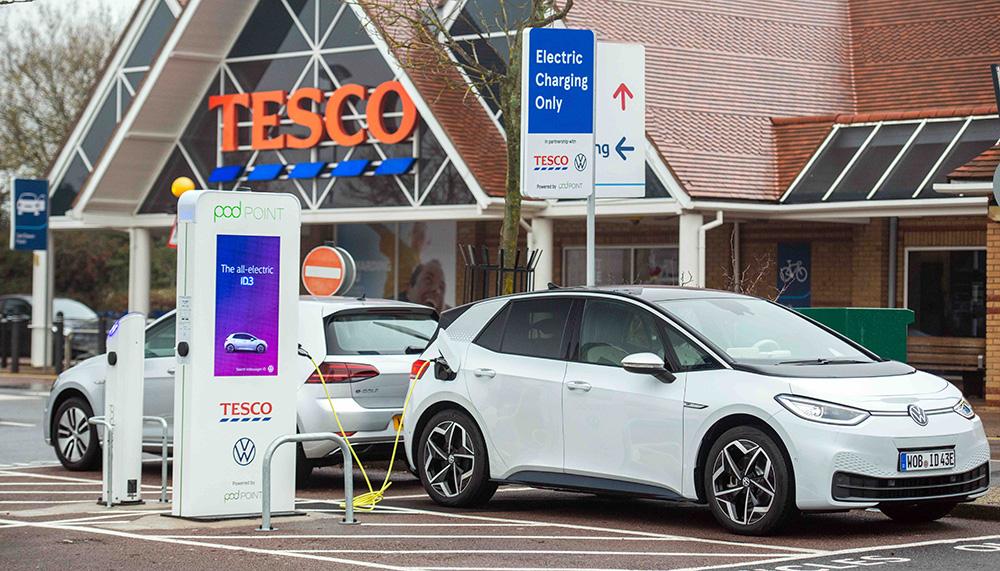
Almost 1,000 new EV chargers were installed at supermarkets within 21 months.
However, while milestones have their place – and should undoubtedly be cause for celebration – they are only part of the picture.
There was significant growth in EV charging ‘hubs’
2021 saw the rise of the EV charging hub. These groups – or hubs – of around six devices are prime examples of ‘en route’ charging, when you want to charge your car as quickly as possible. They tend to be ultra-rapid devices (100kW+), which can add more or less 80 miles of charge in around 15 minutes.
One of the first instances of one of these hubs opening came in March, when InstaVolt set up an eight-bay hub at a Welcome Break service area on the M6, near Corley in the Midlands.
Shortly afterwards, Motor Fuel Group announced its plans to install 3,000 ultra-rapid charging devices – in groups of between four and eight – across its MFG EV Power network by the end of 2030. Osprey, too, announced its ambition to make charging anxiety a thing of the past by installing over 150 high-powered EV charging hubs across the UK by 2025. Not to be outdone, InstaVolt also pledged to install 10,000 new rapid chargers by 2030.
It wasn’t just talk, however. InstaVolt expanded its hub in Banbury. Osprey opened its first dynamic EV charging hub in Wolverhampton, and another hub in Croydon. Moto also opened a major charging hub at Rugby services, featuring 24 ultra-rapid charging points – 12 Tesla and 12 Electric Highway.
And if it’s figures you’re after, between the beginning of January and the end of September, the number of ultra-rapid charging devices – which are predominantly found at charging hubs – increased by more than 50%.

Moto opened a major charging hub at Rugby services with 24 ultra-rapid devices.
The eagle-eyed amongst you will have noticed there’s one quite significant story we haven’t yet covered.
The Electric Highway changed hands
Early in January 2021, financial services company Hitachi Capital announced a £10m investment in GRIDSERVE Sustainable Energy LTD. The latter had just opened its first Electric Forecourt in Braintree, Essex, had plans to open a further 99, and that was that.
However, in March, GRIDSERVE and Ecotricity announced a major new collaboration, through which the two companies would radically develop the Electric Highway, once the world’s first national charging network for electric cars. GRIDSERVE also took a 25% stake in the Electric Highway.
Barely three months later, Ecotricity announced it had sold the Electric Highway in its entirety to GRIDSERVE. The latter then embarked on an impressive upgrade programme, replacing existing chargers with new technology as well as rolling out new high-power devices across the rebranded GRIDSERVE Electric Highway.
GRIDSERVE’s progress continues, apparently unabated. Since June, the company has joined Zapmap’s Live data network, announced two further Electric Forecourts at Gatwick Airport and in Norwich (due to open in 2022), and communicated plans to open 20 more ‘Electric Hubs’ next year at motorway service stations across the UK.
There were lots of government announcements (Part 1)
Early in the year, we welcomed news from the Department for Transport (DfT) that the On-Street Residential Chargepoint Scheme (ORCS) would continue into 2021/22. The £20 million funding boost aimed to increase the number of on-street charge points the government was supporting and help residents without private parking to reliably charge their vehicle.
Another key announcement, that would benefit the rollout of ultra-rapid charging infrastructure across the UK, came in May. Ofgem announced that motorway service areas and key trunk road locations across the country would receive the cabling required to install 1,800 new ultra-rapid charge points.
The projects, which began earlier this year, were to benefit every region in Britain, with 204 net zero projects worth £300 million across England, Scotland and Wales.
Third, the DfT and the Office for Zero Emission Vehicles (OZEV) also confirmed that the grant scheme for electric cars, vans and trucks had been reduced, ostensibly to target less expensive models and allow the scheme’s funding to go further. It wouldn’t be the only time this year, however.
A lot happened at Zapmap
Meanwhile, Zapmap was also making announcements – and lots of them.
For starters, Zapmap launched Zapmap Plus and Premium in June. The two advanced options are for EV drivers who regularly use the public charging network, helping users to plan quicker and drive smarter, with Apple CarPlay and Android Auto available on Premium. Zapmap’s core search, plan and pay services remain free.
August saw Zapmap partner with Advanced Infrastructure to create a new low carbon route planner. The companies’ joint initiative – called Zap-Zero – won £540,000, funded by OZEV in partnership with InnovateUK, to build the new EV route planner. Once complete next year, Zap-Zero will give drivers the ability to choose the lowest possible carbon option, based on Advanced Infrastructure’s in-depth data on local power networks and their carbon intensity.
2021 also saw Zap-Pay, the simple way to pay for EV charging across networks from within the Zapmap app, gain momentum. Seven more networks signed up to the cross-network payment service in 2021, with MFG EV Power and GeniePoint now scheduled to go live in the New Year. They will join Osprey, ESB Energy and char.gy, and make thousands more chargers Zap-Pay enabled for EV drivers across the country.
In November, Zapmap and Allstar Business Solutions, one of the UK’s leading fuel and EV charging companies, announced that they had partnered to provide a seamless payment solution for fleets with EVs. Watch this space for more details early in the New Year.
Also worth noting is that Zapmap published its annual charging network satisfaction rankings, saw the first tidal powered electric vehicle charger go live on Zapmap, and exhibited at the enormously exhilarating (not to mention electrifying) Fully Charged OUTSIDE. It was fantastic to see and speak to so many Zapmap users at the event.
There were more government announcements (Part 2)
For the second time in 2021, the government announced – in December – that the grant scheme for zero-emission vehicles had been cut, purportedly to target less expensive models and allow the scheme’s funding to go further. The government will now provide grants of up to £1,500 for electric cars priced under £32,000, while grant rates for the Plug-in Van Grant will now be £5,000 for large vans and £2,500 for small vans, with a limit of 1,000 per customer per year.
On the charging front, however, thanks to new regulations announced on 22nd November, new homes built in England during 2022 will be required to install EV charging points. The same goes for buildings such as supermarkets and workplaces, as well as buildings undergoing major renovation. This is welcome news. Home charging is an important part of EV ownership and, broadly speaking, this will help to make home charging more accessible for all.
Promisingly, the new government regulations should see up to 145,000 extra charge points installed across England each year in the run up to 2030, when the sale of new petrol and diesel cars will end in the UK.
The way we access cars started to change
Over the course of 2021, we saw that it’s not only vehicles that are changing. Our approach to how we use them, especially electric ones, is changing too. While EV ownership is certainly increasing, other ways of interacting with EVs – such as subscribing, leasing or renting an EV – are also becoming increasingly common.
These different ways of using cars, and the new companies providing these services, are undoubtedly changing the landscape – and how people think about getting hold of a car.
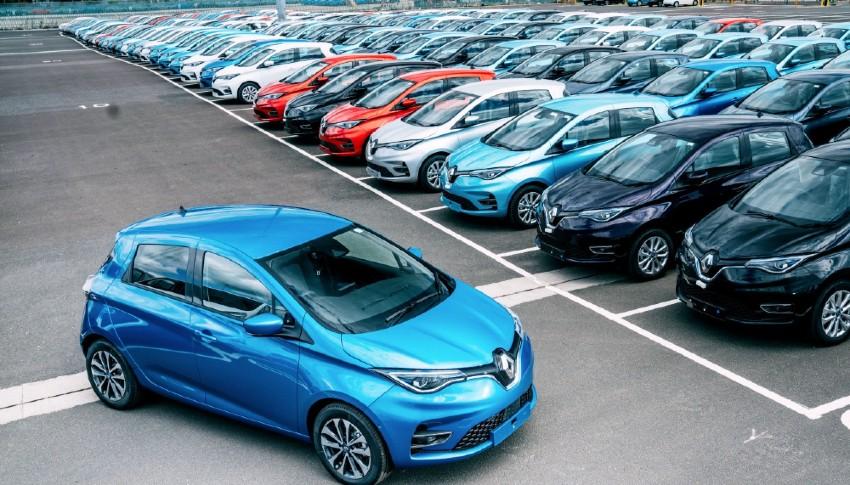
EV subscription services such as Onto proved popular in 2021.
UK EV subscription service Onto, for instance, announced in July that it had raised £125 million in a financing round, enabling the company to embark on its next phase of rapid growth. Onto had experienced high demand for its services since summer 2020, placing a slew of orders for electric vehicles. In July this year, the company offered around 3,000 electric cars to subscribers.
Similarly, British electric car leasing platform WeVee has also closed a seed financing of seven million dollars in July this year. The company intends to use this to finance its expansion into continental Europe. According to WeVee at the time, 100,000 users from the UK visited its website each month.
It will doubtless be interesting to see how this sector develops over the course of 2022, and whether it might have an impact on how EV drivers interact with electric vehicle charging.
In carrying out this review, it became increasingly apparent that we could only ever hope to highlight some of the key moments in EV charging during a year of huge change. A lot has been left out.
If you are interested in how EV charging will be different in 2022, see the article below, which details what the team at Zapmap thinks is coming for EV charging in the year ahead.
